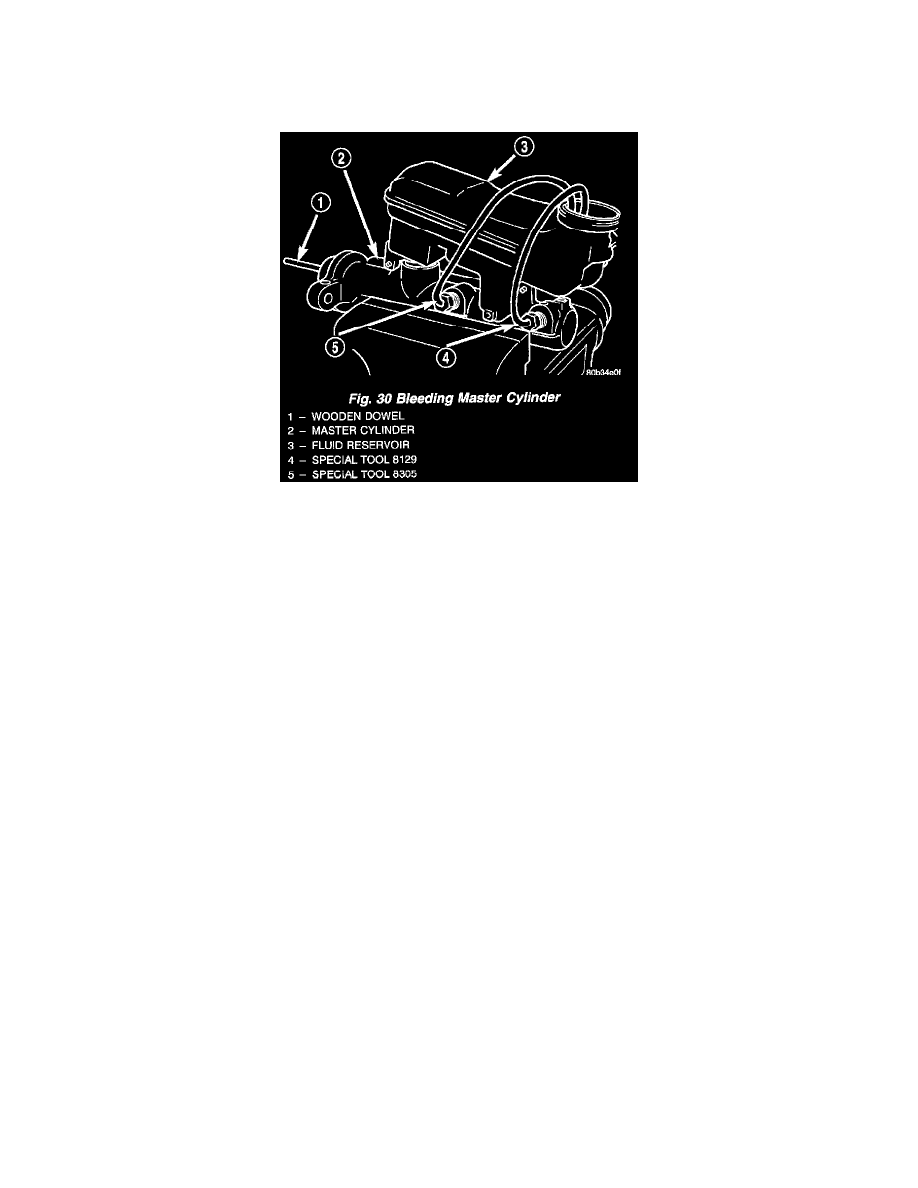LHS V6-3.5L VIN G (1998)

Brake Master Cylinder: Service and Repair
Master Cylinder Bleeding
CAUTION: When clamping the master cylinder in a vise for bleeding, carefully tighten the vise just enough to hold the master cylinder from moving.
Excessive pressure can damage the master cylinder.
1. Clamp the master cylinder in a vise.
NOTE: The master cylinder on this vehicle uses ISO style flares and metric threads on the master cylinder outlet ports. Special Tool Packages
8129 and 8305 or equivalents have ISO style flares and metric threads on their bleeding tubes.
2. Position the appropriate bleeding tools from packages, Special Tool 8129 and 8305 or equivalents, on the master cylinder. Place open ends in the
fluid reservoir. Then, attach the bleeding tube fittings to the master cylinder outlet ports.
NOTE: Make sure the open ends of the bleeding tubes are below the surface of the brake fluid when the reservoir is filled to the proper level.
3. Fill reservoir with brake fluid conforming to DOT 3 specifications such as Mopar or Equivalent.
4. Using a wooden dowel. Depress master cylinder pistons slowly, and then allow pistons to return to released position. Repeat several times until all
air bubbles are expelled.
5. Remove bleeding tubes from cylinder, plug outlets and install filler cap.
6. Remove master cylinder from vise and install on power brake vacuum booster.
NOTE: It is not necessary to bleed the entire hydraulic system after replacing the master cylinder, providing that the master cylinder has been
bled and filled upon installation.
